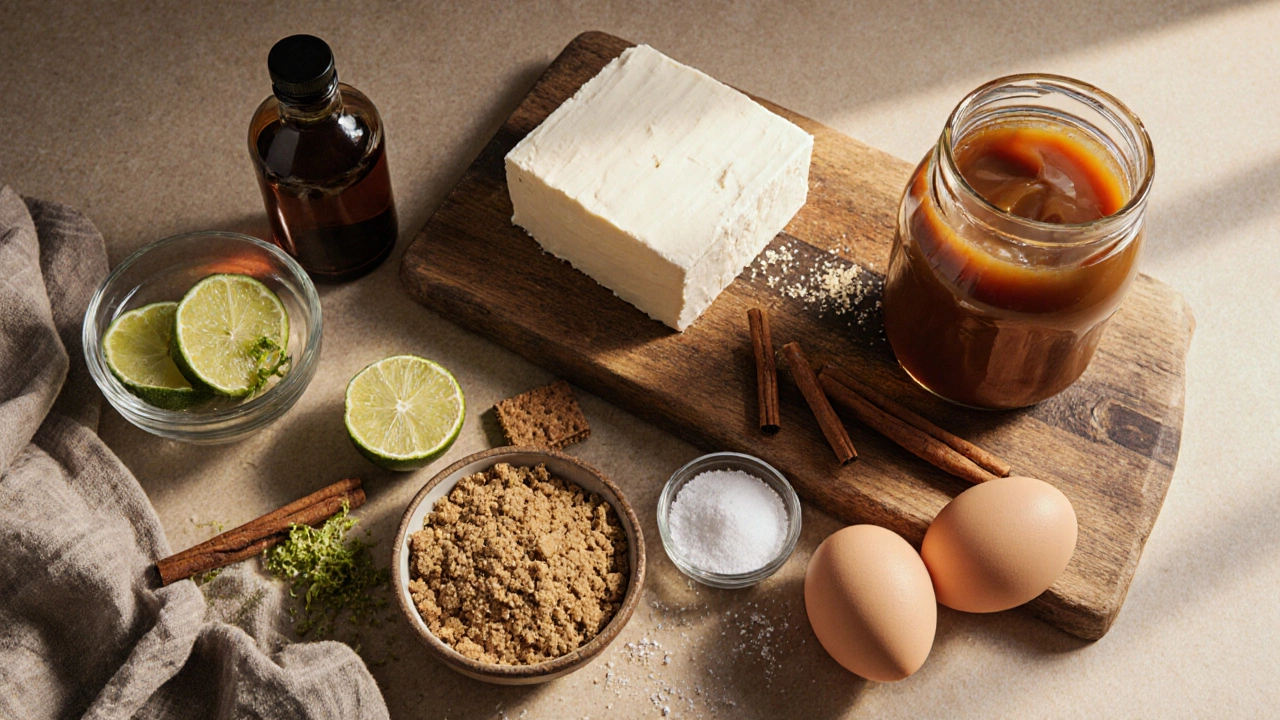
Mexican Cheesecake Ingredient Guide
Key Ingredients
Discover the essential components that make Mexican cheesecake unique. Click on each ingredient to learn more about its role in the recipe.
Mexican Flavors
Explore how traditional Mexican ingredients like dulce de leche and lime zest create the distinctive taste profile of this dessert.
Cream Cheese
Provides the rich, smooth base for the filling. Use full-fat, room-temperature cream cheese to avoid lumps.
Dulce de Leche or Cajeta
Adds a deep caramel note that replaces plain sugar. About half a cup balances sweetness without overwhelming the cheese.
Crust Base
Graham cracker crust or crushed Mexican butter cookies mixed with melted butter creates a buttery, slightly crunchy foundation.
Eggs
Act as a binding agent, giving the cheesecake structure when baked. Two large eggs are standard; they also contribute to the custardy mouthfeel.
Sugar
Sweetens the mixture, but because dulce de leche already brings caramel, you can reduce the granulated sugar by about a third.
Vanilla Extract
Adds a warm background note that ties the caramel and cheese together. One teaspoon is enough.
Lime Zest
Provides a fresh, citrus spark that cuts through the richness. Only a teaspoon; you don't want the bitterness.
Cinnamon
Sprinkles on top or folds into the batter for subtle warmth, a classic Mexican flavor. A light dusting does the job.
Optional Mexican Twists
These add-ons are popular in Mexican bakeries:
- Mexican Chocolate: Melted dark chocolate with a pinch of cinnamon can be swirled into the batter for a mocha-like surprise.
- Chili Powder or Ancho Chilies: Just a pinch gives a gentle heat that pairs surprisingly well with the sweet caramel.
- Toasted Pumpkin Seeds (Pepitas): Sprinkle on the top for crunch and an earthy note.
- Fresh Fruit: Mango or guava sliced alongside the slice for a tropical balance.
Pro Tips
- Room-temperature dairy keeps the batter smooth
- Don't over-beat the eggs to prevent cracking
- Use a water bath for extra creaminess
- Refrigerate for at least 4 hours before serving
FAQ Summary
- Gluten-free? Yes, use gluten-free cookies for crust
- Water bath needed? Not mandatory but recommended
- Storage? Up to 5 days refrigerated or 2 months frozen
- Substitution? Cajeta works great as a dulce de leche alternative
Quick Takeaways
- Traditional Mexican cheesecake blends cream cheese with sweet dulce de leche for a caramel‑rich base.
- The crust usually uses crushed graham crackers or Mexican galletas de mantequilla mixed with butter.
- Flavor boosters like lime zest, cinnamon, or a hint of chili add the signature Mexican twist.
- Eggs and sugar bind the filling, while vanilla rounds out the taste.
- It bakes at a gentle temperature and finishes under a broiler for a lightly browned top.
If you’ve ever wondered what makes a Mexican cheesecake taste different from the classic New York version, you’re in the right spot. Below we break down each component, explain why it matters, and give you the confidence to whip up this vibrant dessert at home.
What defines Mexican cheesecake?
Mexican cheesecake is a cream‑based dessert that blends traditional cheesecake techniques with flavors native to Mexican cuisine. It keeps the dense, silky texture you expect from cheesecake but swaps in ingredients like cajeta (goat‑milk caramel) and citrus zest for a brighter finish. In contrast, a standard cheesecake typically relies on plain cream cheese, a simple vanilla extract, and a plain graham‑cracker crust.
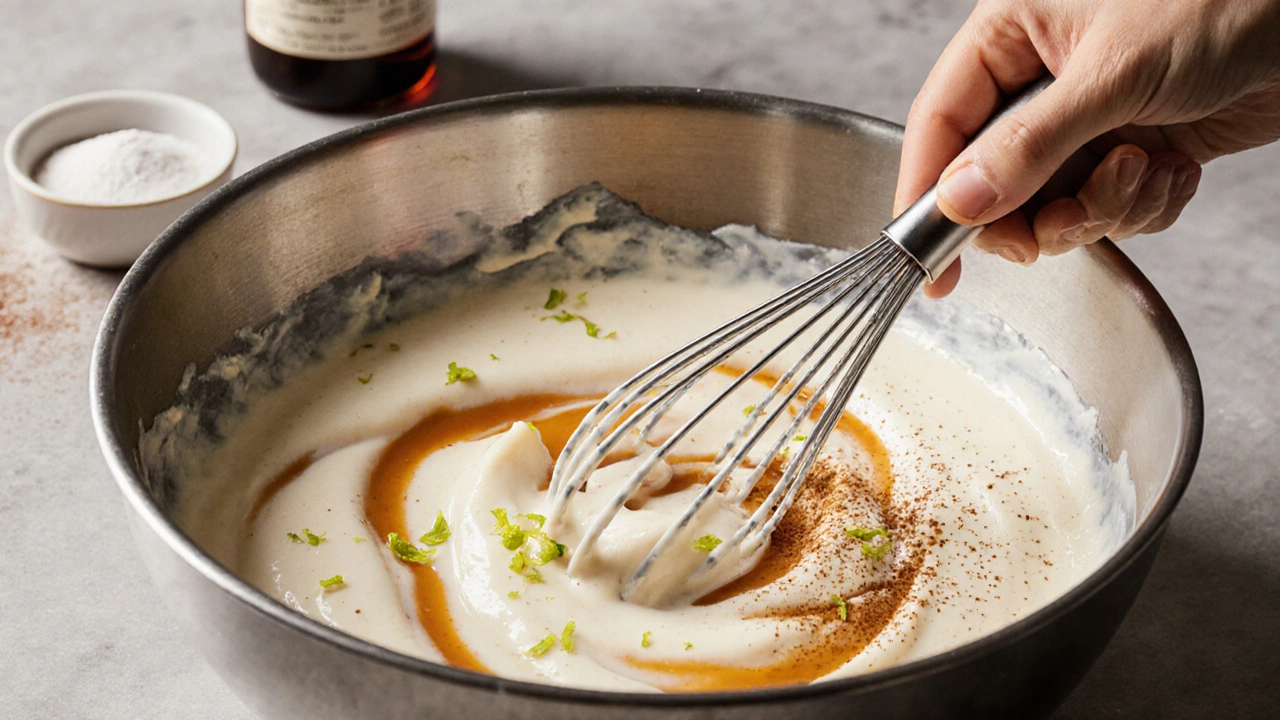
Core ingredients and why they matter
Here’s a rundown of the essential players that give Mexican cheesecake its identity. Each is marked up the first time it appears, so you can easily spot the key elements.
- Cream cheese provides the rich, smooth base for the filling. Use full‑fat, room‑temperature cream cheese to avoid lumps.
- Dulce de leche or its Mexican counterpart cajeta adds a deep caramel note that replaces plain sugar. About half a cup balances sweetness without overwhelming the cheese.
- Graham cracker crust or crushed Mexican butter cookies mixed with melted butter creates a buttery, slightly crunchy foundation. Pressed into a spring pan, it holds the filling together.
- Eggs act as a binding agent, giving the cheesecake structure when baked. Two large eggs are standard; they also contribute to the custardy mouthfeel.
- Sugar sweetens the mixture, but because dulce de leche already brings caramel, you can reduce the granulated sugar by about a third.
- Vanilla extract adds a warm background note that ties the caramel and cheese together. One teaspoon is enough.
- Lime zest provides a fresh, citrus spark that cuts through the richness. Only a teaspoon; you don’t want the bitterness.
- Cinnamon sprinkles on top or folds into the batter for subtle warmth, a classic Mexican flavor. A light dusting does the job.
Optional Mexican twists
If you love experimenting, these add‑ons are popular in Mexican bakeries:
- Mexican chocolate: Melted dark chocolate with a pinch of cinnamon can be swirled into the batter for a mocha‑like surprise.
- Chili powder or ancho chilies: Just a pinch gives a gentle heat that pairs surprisingly well with the sweet caramel.
- Toasted pumpkin seeds (pepitas): Sprinkle on the top for crunch and an earthy note.
- Fresh fruit like mango or guava: Serve sliced alongside the slice for a tropical balance.
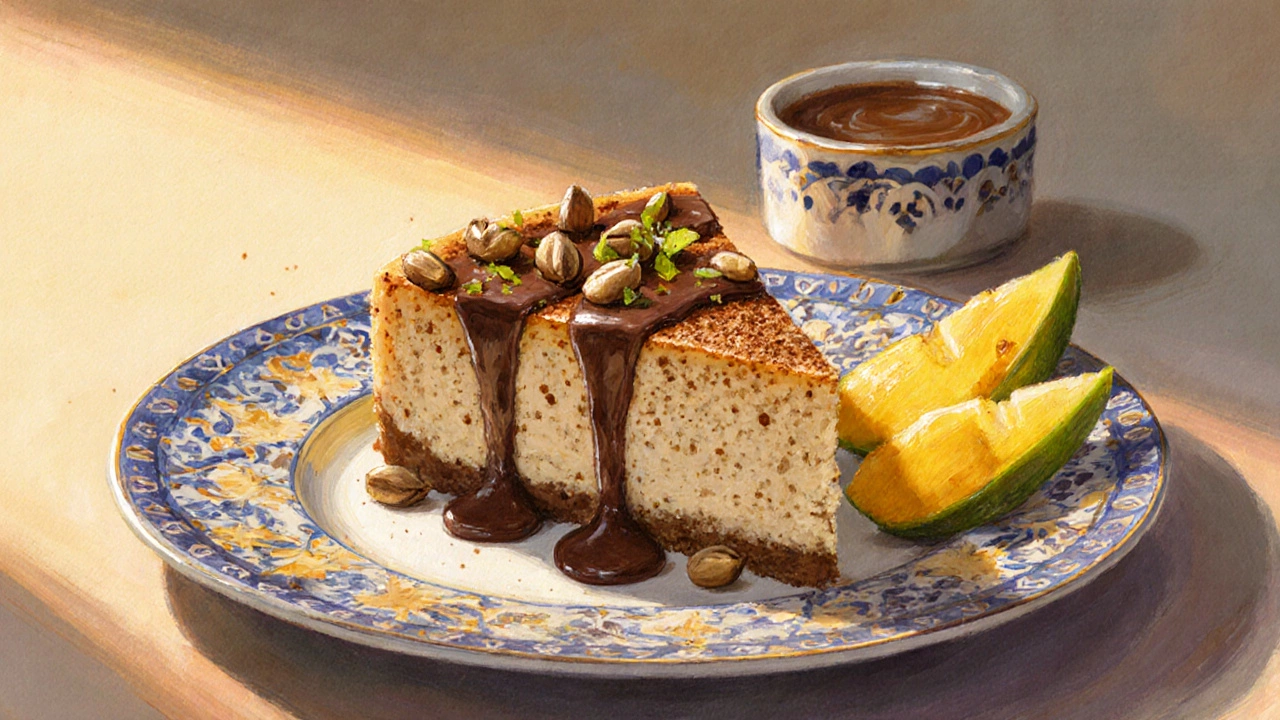
Step‑by‑step assembly
- Preheat the oven to 325°F (160°C). Grease a 9‑inch springform pan.
- Combine crushed graham crackers (or Mexican butter cookies) with melted butter. Press the mixture evenly into the pan’s bottom.
- In a large bowl, beat softened cream cheese until smooth.
- Add dulce de leche, sugar, vanilla, and lime zest. Mix until fully incorporated.
- Beat in the eggs one at a time, making sure each is fully blended before adding the next.
- Pour the batter over the crust, smoothing the top with a spatula. Sprinkle a thin layer of cinnamon on the surface.
- Bake for 45-50 minutes, or until the edges are set but the center still has a slight wobble.
- Turn off the oven, crack the door, and let the cheesecake cool inside for an hour-this prevents cracks.
- Refrigerate for at least 4 hours, preferably overnight. Before serving, run a thin knife around the edge, release the springform, and slice.
Tips, tricks, and common pitfalls
- Room‑temperature dairy keeps the batter smooth. If the cream cheese is cold, you’ll get lumps that are hard to smooth out.
- Don’t over‑beat the eggs. Too much air can cause the cheesecake to puff and then crack as it cools.
- If you prefer a firmer texture, add a tablespoon of flour or cornstarch to the batter.
- Use a water bath (bain‑marie) for an even bake and extra creaminess. Place the springform pan in a larger roasting pan filled with hot water halfway up the sides.
- For a glossy top without a broiler, brush a thin layer of melted Mexican chocolate over the surface once it’s cooled.
Frequently Asked Questions
What makes Mexican cheesecake different from a New York cheesecake?
Mexican cheesecake swaps plain sugar for dulce de leche or cajeta, adds citrus zest and cinnamon, and often incorporates a slightly crumbly, buttery crust made with Mexican cookies. The result is a caramel‑sweet, mildly spiced dessert that’s softer than the dense New York style.
Can I make a gluten‑free Mexican cheesecake?
Absolutely. Replace the graham‑cracker crust with a blend of gluten‑free oat cookies, almond flour, and butter. The filling itself is already gluten‑free.
Do I need a water bath?
A water bath isn’t mandatory but it helps keep the texture ultra‑creamy and reduces the chance of cracking. If you skip it, bake at a lower temperature and watch the edges closely.
How long can leftover Mexican cheesecake be stored?
Cover tightly with plastic wrap and refrigerate. It stays fresh for up to five days. For longer storage, freeze slices in an airtight container for up to two months; thaw in the fridge before serving.
Can I substitute cajeta for dulce de leche?
Yes. Cajeta is a goat‑milk version of dulce de leche and has a richer, slightly tangy flavor. Use it in equal measure, but you may want to reduce the added sugar a bit.


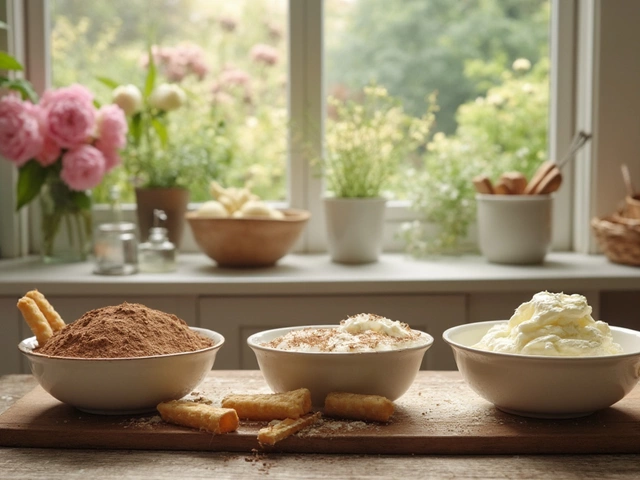
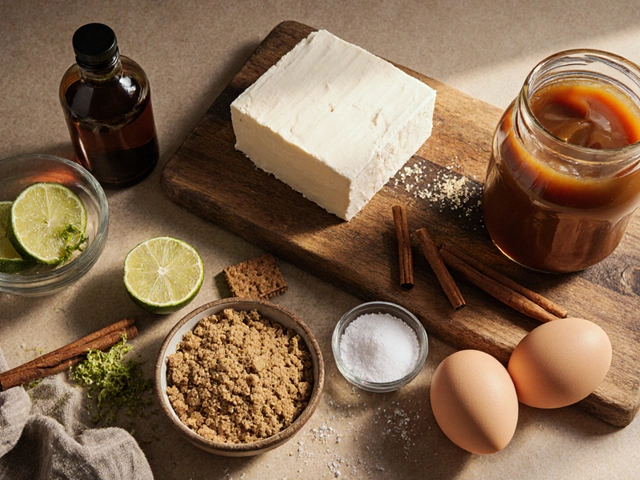
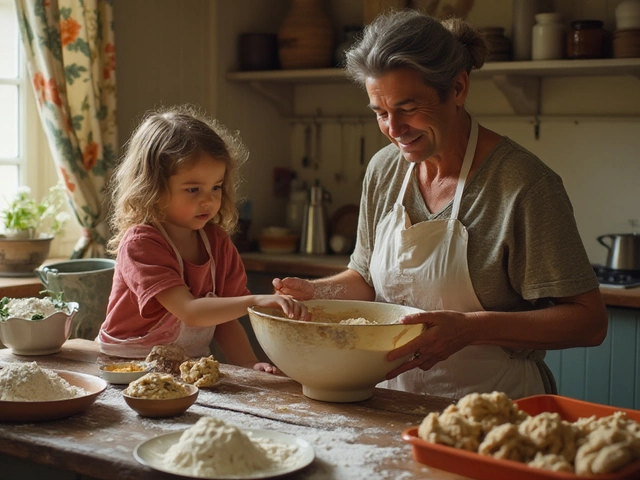


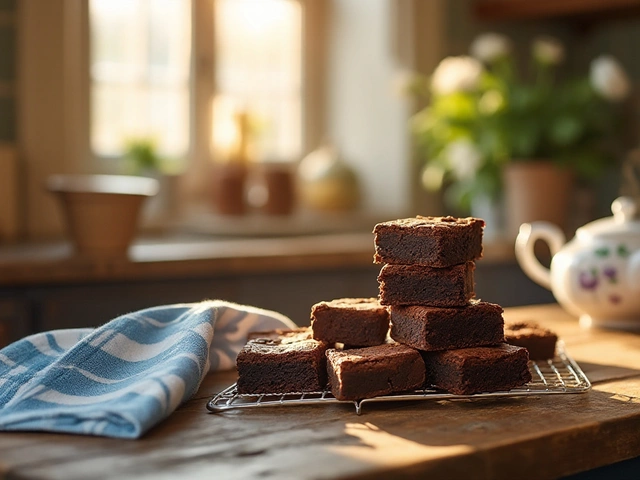
Write a comment